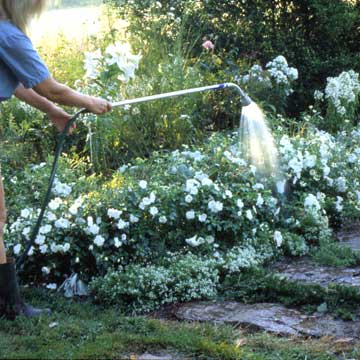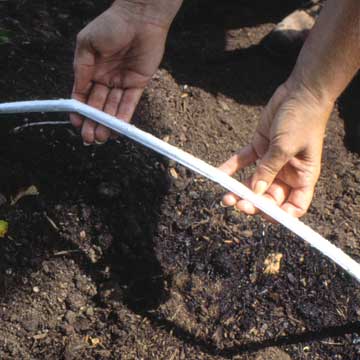





 Step 1.
Step 1.
If you water annuals from overhead, do so early enough in the day that the foliage dries before nightfall. A watering-hose attachment provides a gentle spray.
continue reading below Step 2.
Step 2.
Drip-irrigation tubing and soaker hoses use water more efficiently than overhead sprinklers, and are very handy if flowers are planted in rows or blocks.
You're not alone in the disliking cold showers or cold bathwater; plants hate cold water, too. This is especially true when they are seedlings or growing in pots where there isn't enough soil to absorb the shock. Always water young plants with cool or tepid water, never icy cold.
Check your new transplants every day, especially if the sun is hot, the air is warm, and there is a noticeable breeze or wind. The warm air moving over the open ground will quickly absorb water, sometimes leaving the plant roots in dire straits. New transplants need soil that is evenly, constantly moist, but not soggy. When planting small peat pots directly into the soil (a practice often used with annuals that may not survive root disturbance), be sure that no part of that pot protrudes above the soil. If it does, the dry peat will act like a wick, soaking water from the soil and letting it evaporate into the air.
If you water the new plants with a watering can, turn the rose at the tip so that the holes point upward to the sky instead of down toward the earth. This minimizes soil disturbance. Finally, remember that a little bit of water is frequently worse than no water at all. When you water, do so thoroughly, letting the moisture soak into the ground where the roots need it -- don't merely wet the surface.
Copyright © www.100flowers.win Botanic Garden All Rights Reserved